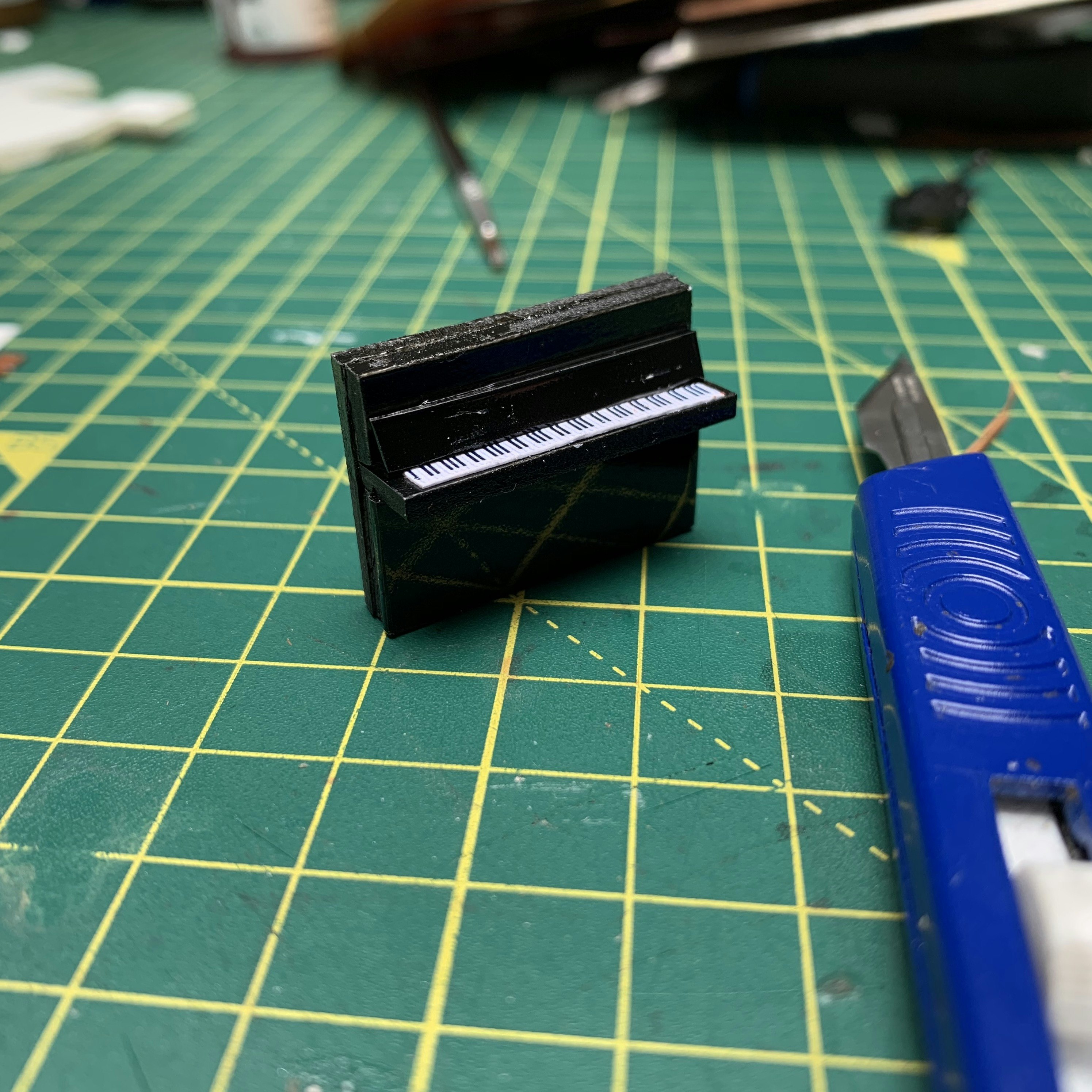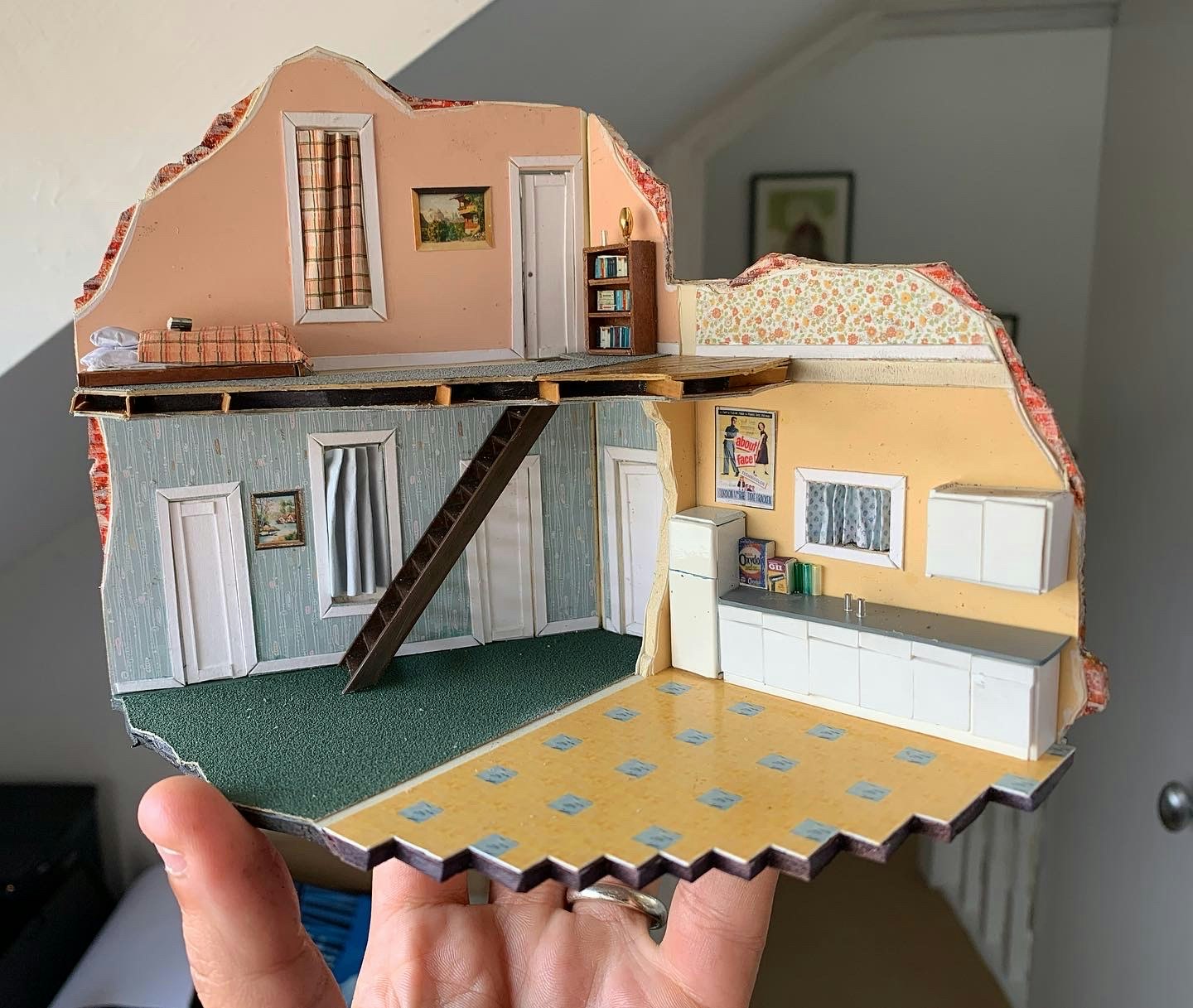Blues for Mister Charlie
Blues for Mister Charlie' by James Baldwin
Speculative design for National Theatre's Olivier Auditorium
---
‘We are walking in terrible darkness here, and this is one man’s attempt to bear witness to the reality and the power of light’ - James Baldwin
This searing and resonant play about the racist murder of a young black man and the perpetrator's escape from justice, is an investigation into the soul of America and the audience’s conscience and complicity. My design is a revolving, claustrophobic cross-section of church, home, court and bar set atop of a factory furnace, grinding round with the systemic nature of the industrial state.
This was the final project for my Theatre Design MA at Wimbeldon College of Arts, UAL. I designed and completed the work at home due to Covid. I worked at 1:50, a tiny scale, as the venue - the Olivier - is vast and wouldn't fit in the house at the traditional 1:25.
All the sets fill a third of the 'drum-revolve' on the Olivier stage, and the set changes are acheived by lowering a set into and under the stage and swapping it with the one stored there. These videos show the sets on the move on a mini-revolve. The first video has the church, home and juke joint (which is how Act 1 works):
This video has the court, home and store:
I enjoy seeing how other designers work, so am going to break down this project a bit, and explain how it came together. The first step was building the legendary venue. I've always loved the Olivier and having it sat in the corner of the desk, empty, was quite intimidating!

The next stage was researching and pulling reference imagery - the below being a small snap-shot. The incredible Gordon Parks photography from the period were essential, as was understanding the historical significance of the Emmett Till court case. I spent a while drafting lots of scruffy sketches on storyboard panels I prepared of the venue, and gradually found the mechanics of the production and worked these up into concept art to run past production management and other creatives.

I landed on a concept of boiling down the play to key recognisable locations, typical environments of systemic racism - religious, domestic, entertainment, business and legal - and to examine them in cross section. I worked these up into rounds and rounds of white-card drafts - drilling the mechanics of the drum revolve and working out how to make it click.

This image shows how the sets interlock together within the confines of the revolve so that one can descend into it whilst out of sight from the audience:

I worked on a small mechanical revolve to test the sight-lines, movement, shadows and how the actors and architecture would play off the light and story:
I then played with the space, trying out textures and lighting in the Olivier space. I came to realise it most likely worked best with the Olivier dark and foreboding as background, rather than with a realistic environment the characters could escape to.

Once I was confident in the white-card models, I researched all the finishes and materials:

I then ran lots of tests. I didn't end up using much actual wood, instead mimicking it with more precise and functional materials for 1:50 scale. Here are some working photos of material testing. Also, a few of my favourite makes (piano, bed, flag...etc).







I then scratch-built the full sets, dressed them and finally broke them down with pigments and powders to beat them up a bit. Showing her in my hand for understanding of scale:




Finally, here are a simple plan and section, for those interested!













